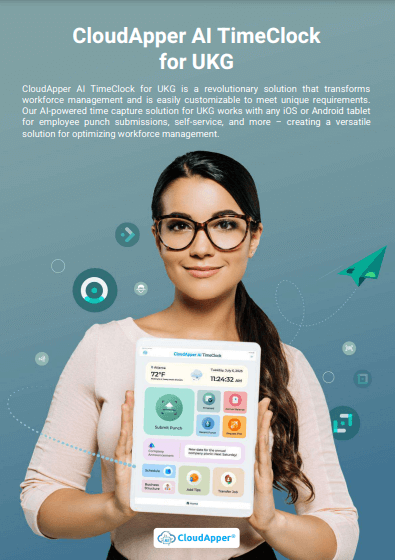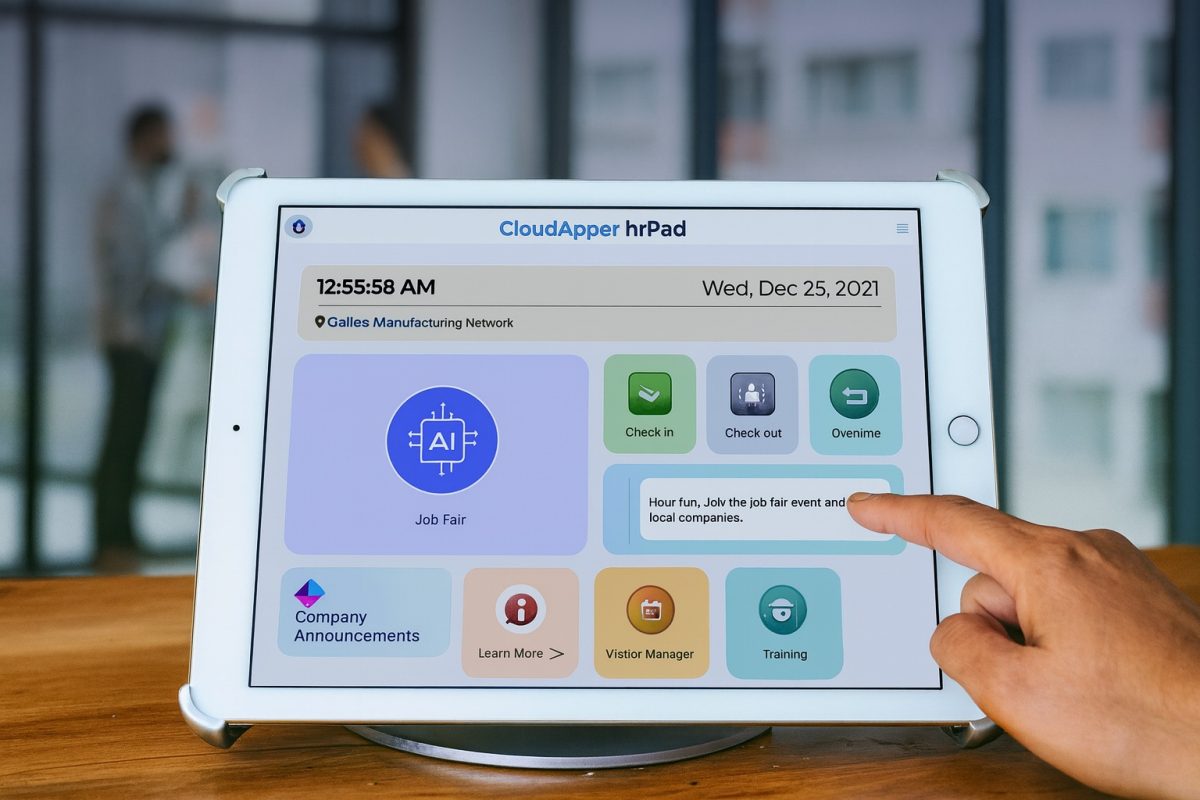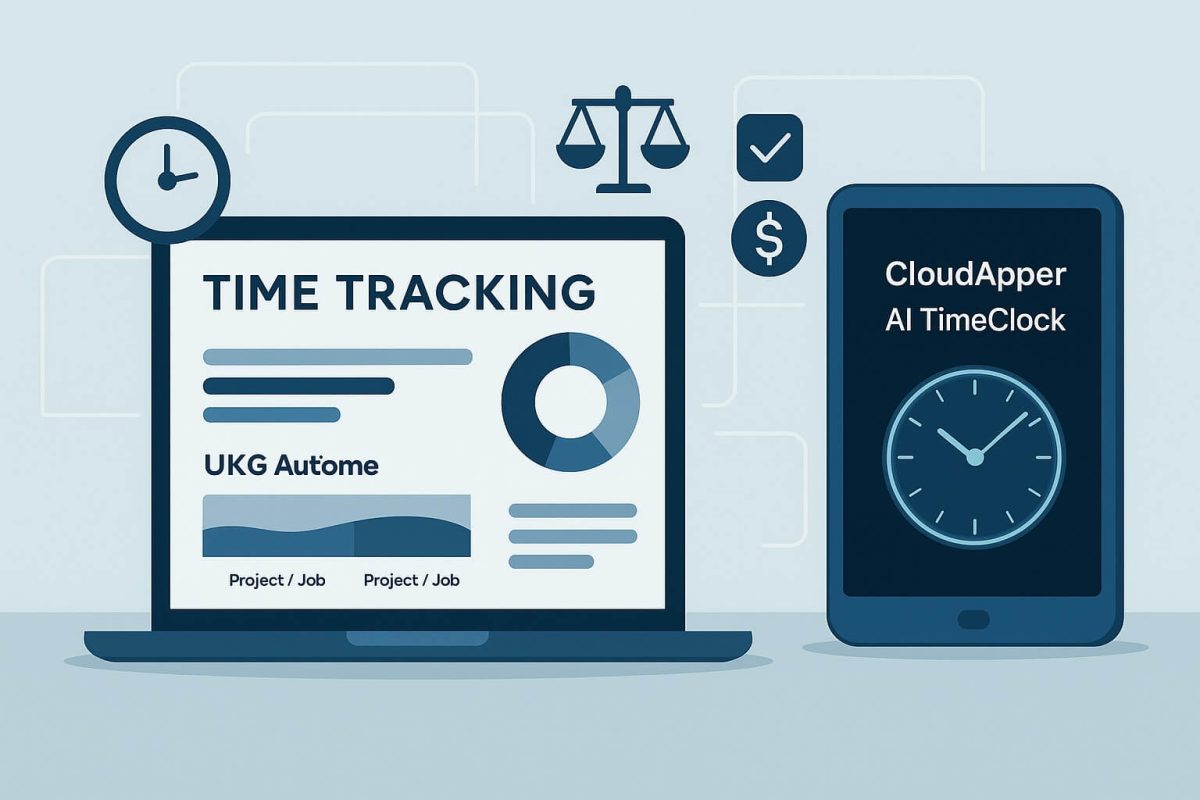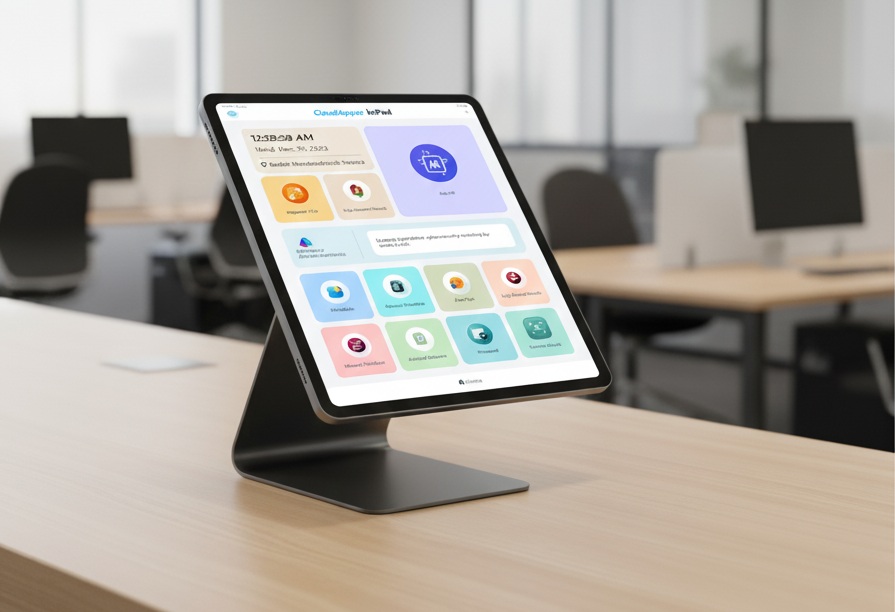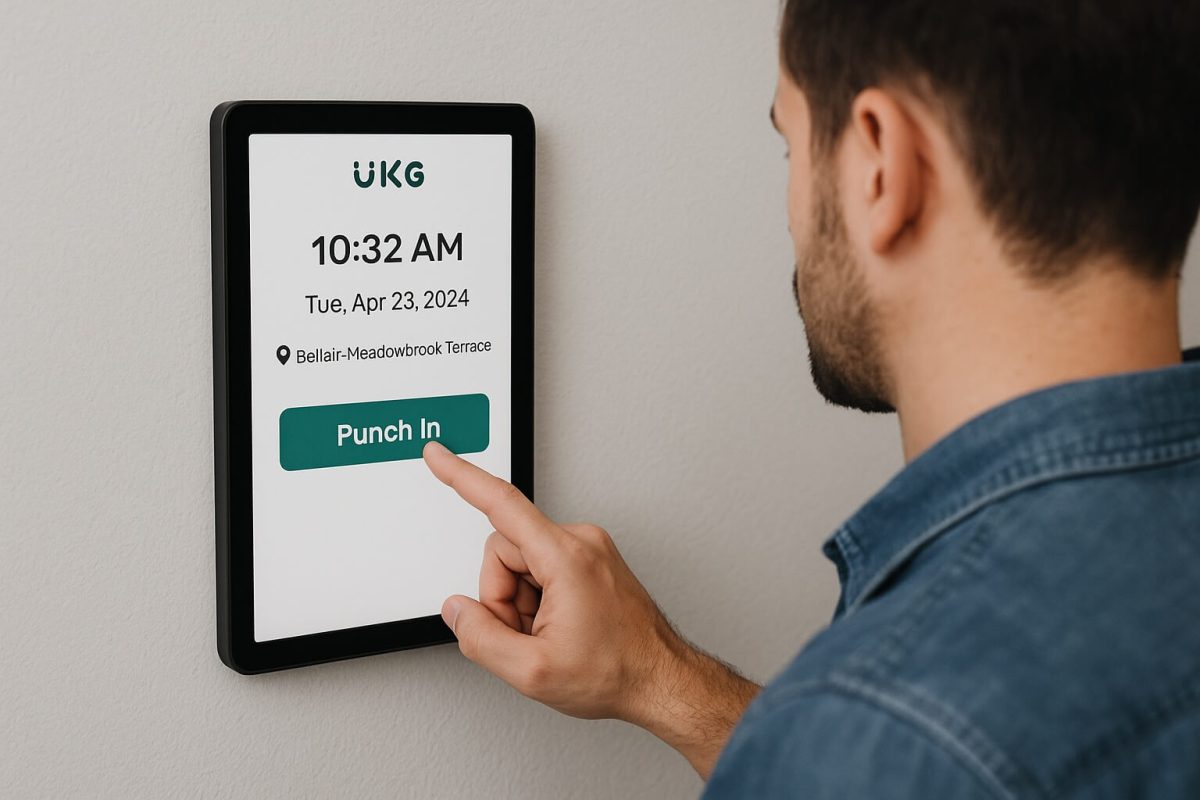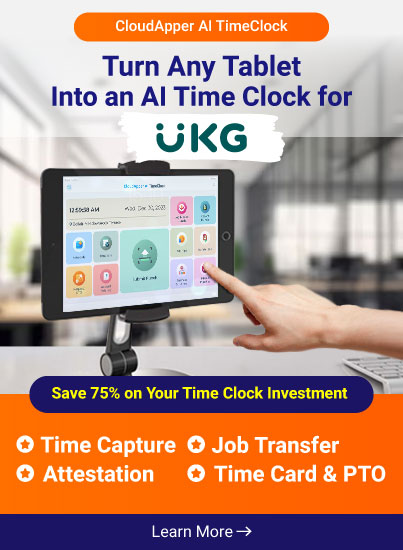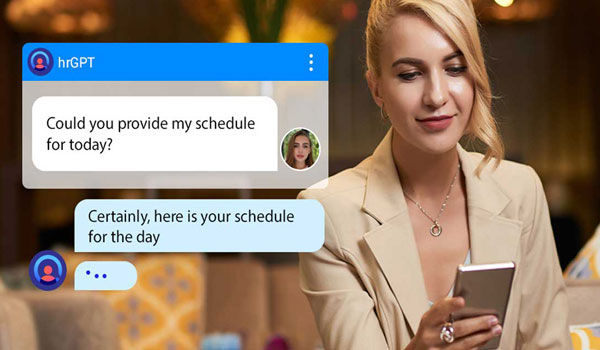An effective time tracking policy in place can work wonders for organizations - saving costs, providing clear instructions, and improving compliance. Here are a few ways on how to improve employee time tracking policies and how modern solutions like CloudApper hrPad can help UKG users ensure effective employee timekeeping.
Table of Contents
Precise employee timekeeping is vital for any given organization for several purposes. It impacts everything from accurate payroll and budgeting to operational efficiency and even employee morale. Yet, crafting and implementing an effective time-tracking policy can be challenging but not impossible. Let’s take a look at some effective ways to improve time tracking for UKG users and how tablet-based solutions like CloudApper hrPad can help them with it.
For more information on CloudApper AI TimeClock for UKG visit our page here.
Understanding Employee Time Tracking
Employee time tracking policies don’t just help organizations record employee clock-ins and outs – they also help them set clear guidelines, enhance compliance, reduce payroll discrepancies, and more. Such policies provide a framework for both employers and employees, fostering transparency, adhering to labor regulations, and empowering informed decision-making.
That being said, here’s how UKG users can improve employee time-tracking policies.
Guidelines For An Effective Time Tracking Policy
Ensure Clarity
First and foremost, HR teams need to define work hours. They need to clearly spell out what constitutes work time, including breaks, overtime, travel, and any other applicable scenarios. Use unambiguous language and avoid room for interpretation. They also need to outline the requirements in clear and simple language that employees can follow. The time tracking policy should clearly specify how and when employees should assist with timekeeping (e.g., at the beginning and end of shifts, before and after breaks, and before job transfers). The policy also needs to address exceptions – it must define procedures for handling time adjustments, unexpected absences, and flexible work arrangements.
Enable Accessibility
The organization should offer multiple time tracking options to cater to diverse preferences and work environments. For instance, remote workers need to be provided with access to clock in and out via mobile devices. In contrast, field workers need solutions to cater to their working conditions. The time tracking policy should also ensure that the chosen methods are easily accessible and user-friendly for all employees, old and new, regardless of technical expertise.
Make It Flexible
Ensure that the policy includes offering time banking options where employees can accrue extra hours to use for later absences or personal time – this really helps improve employee satisfaction as they get to take breaks whenever they need to. Moreover, when it comes to accommodating flexible work arrangements, remote timekeeping must be ensured, and clear guidelines should be present for the entire scenario.
Maintain Communication
One of the most important aspects of time-tracking policies is to communicate them readily and clearly. Thoroughly explain the time tracking policy during employee onboarding and provide readily available resources for reference. Moreover, whenever any changes are made, communicate them to employees and include them in the policy clearly and well in advance. Expect employee queries regarding these changes and be ready to answer them promptly and consistently. Also, ensure that there’s two-way communication – encourage open communication and solicit feedback from employees on the policy’s effectiveness and potential improvements.
Foster Ownership and Transparency
Develop the policy by collaborating with employees – they’re the ones who’ll be using it! Involve employees in the policy development process, empowering them to understand and own its principles. Emphasize the importance of how a timekeeping policy helps with accurate timekeeping for payroll, scheduling, and fair compensation – fostering accountability and ownership.
Use Modern Solution(s)
To ensure that the policy is effective and useful, use modern and robust solutions that seamlessly integrate with UKG, such as CloudApper hrPad. CloudApper hrPad is an AI-powered HRSD solution for UKG that serves to capture employee punches, provide 24/7 HR support to employees, capture custom employee data, conduct surveys, and more.
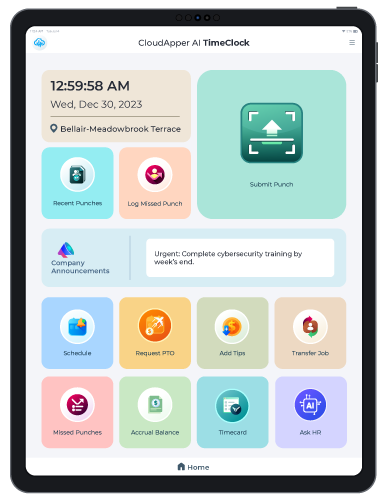
CloudApper hrPad for UKG
Group of Amusement Centers Chose AI hrPad for UKG Pro WFM
Leveraging AI To Improve Employee Timekeeping
Here’s how CloudApper hrPad can help UKG HCM users improve employee timekeeping:
- Effortless Capture: Utilize any Android tablet or iPad as a secure time capture device, offering your employees a familiar and user-friendly interface.
- Employee Verification: Eliminate buddy punching with secure facial recognition, ensuring only authorized employees clock in or out.
- Customizable Workflows: Tailor time capture processes to your specific needs by capturing custom data like tips, certifications, or project-specific details.
- Intuitive Attestations: Implement attestation prompts at clock-out, allowing employees to confirm work hours and break times, bolstering data accuracy.
- Real-time Alerts: Receive and provide immediate notifications to employees and managers for necessary events, such as reminders for clocking out, missed punches, and more.
- Offline Functionality: Capture punches and alerts even without internet access, ensuring seamless operation in any environment.
Why UKG Users Need CloudApper hrPad
By implementing best practices and partnering with AI-powered solutions like CloudApper hrPad, UKG users can improve time tracking that empowers them to:
- Boost Accuracy and Compliance: Eliminate time theft and ensure adherence to labor regulations with advanced security features and real-time alerts.
- Improve Employee Experience: Offer a user-friendly, flexible, and transparent time tracking solution, fostering trust and accountability.
- Streamline HR Processes: Automate tedious tasks like data entry and verification, freeing up HR resources for strategic initiatives.
- Gain Valuable Insights: Leverage captured data for informed decision-making, optimizing scheduling, staffing, and resource allocation.
- Promote a Culture of Ownership: Build a collaborative environment where employees understand and participate in upholding accurate timekeeping practices.
Conclusion
CloudApper hrPad not only helps improve employee timekeeping but it also helps take HCM automation to the next level. Schedule a demo today and discover how CloudApper hrPad can help you unlock the full potential of your HR and timekeeping processes, building a robust, employee-centric system that fuels productivity, profitability, and organizational success.






